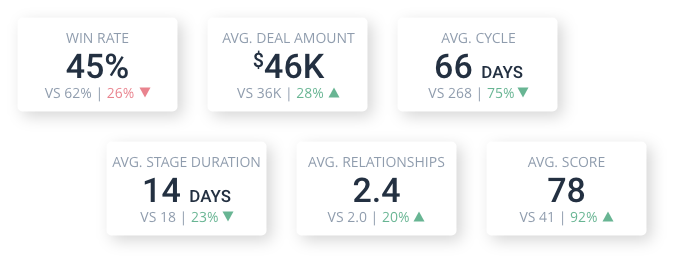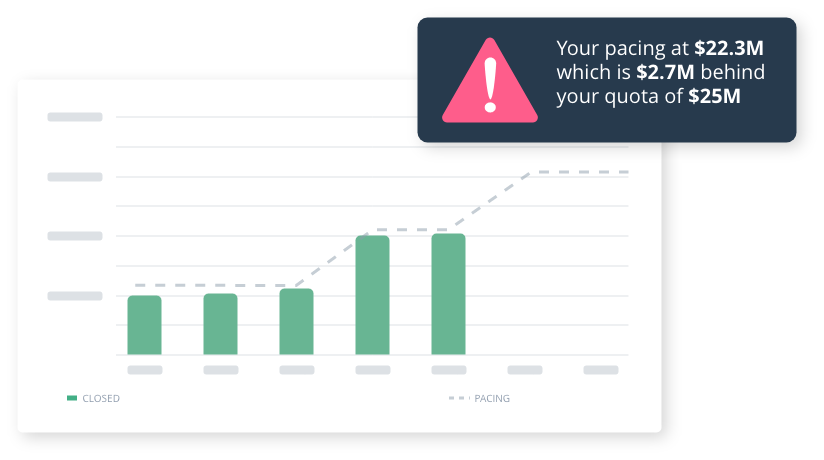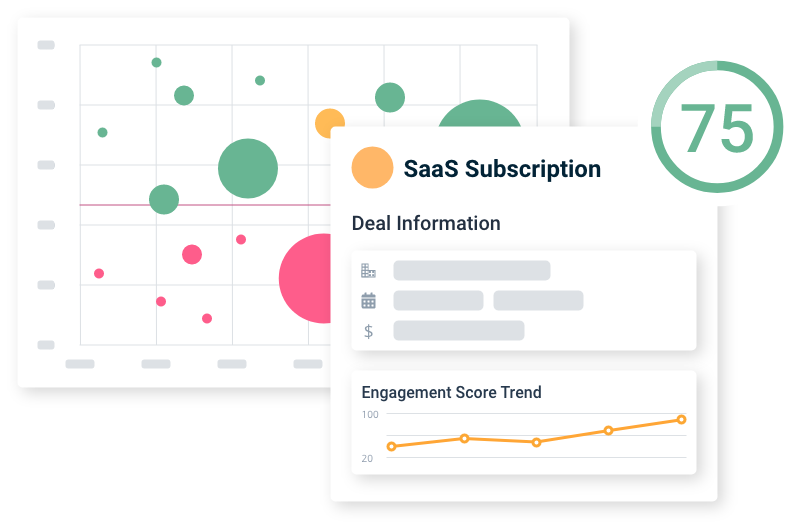Table of Contents
Share this article
Learn from the brightest minds how to predictably and efficiently grow revenue.
Related Content
Improve your win rates by 117% by spotting these slippage red flags
easily identify the telltale signs of risk that an opportunity is going to slip. Equipped with this knowledge, sales teams can then be proactive to salvage these opportunities, close them faster and improve win rates.
What is Revenue Operations?
They say all roads lead to Rome. If you imagine Rome as revenue, then the role of revenue operations is to make sure that those roads are built in the most efficient way and that they are effectively signposted. Revenue operations, or “rev ops” in it’s shortened form, is the strategic alignment of sales, marketing,…
How Set Up Historical Trend Reporting in Salesforce
A Guide to Set Up Trend Reporting in Salesforce Reporting in Salesforce is one of the most powerful features you have when trying to demonstrate the value of a business. Building key reports in a matter of minutes with a simple drag and drop interface that anyone can use is extremely effective. Being such a…

How to Analyze your Sales Pipeline – Measuring Your Pipeline Health
The key to understanding how your pipeline is performing is knowing what state it is in. The gauge of that is pipeline health. In the first of our series, we looked at creating the foundations of your pipeline and the metrics that are needed to know what is happening within it.
In this article, we will be looking at how each of the metrics works to give you a complete view of your pipeline. By analyzing each of the metrics as well as the overall sales environment you can build a clear path to optimizing your pipeline and sales process.
Table of Contents
Benchmarking Your Sales World
What is needed to measure the health of your pipeline? A large part of understanding what is happening with your sales process is knowing what each component of your sales operation is doing and benchmarking against historical data. By benchmarking that data against what is happening in your current pipeline you can effectively determine what your deals look like, and distinguish which deals are looking like they have been won and which are at risk of being lost.
There are various perspectives that you can break your analysis over, however, one of the most important is deal stages. By breaking down your pipeline into each stage and analysing how each of those stages has performed you are able to understanding where your prospects or customers are within your process and give you an insight into how they progress through your sales funnel. Furthermore, by benchmarking each stage of your sales process against historical data you can see how your current pipeline is likely to perform with more confidence as your baseline data is your own. The additional insight enables you to identify issues and roadblocks throughout the lifecycle of your pipeline.
Benchmarking your historical opportunities based around their stage enables you to build out a picture of how likely you are to achieve certain milestones and gives you insight into how your pipeline’s pacing. The pacing of your deals is the key baseline for you to understand the health of your pipeline. It allows you to not only set expectations (achievable quotas) but also gives you a tested way of knowing if you are likely to achieve it and if not how far you are behind.

Additionally, by reviewing and analysing your previous pipeline you can see how each activity and communication performed and what the engagement was for each of them. Meaning that you are able to understand what activities drive engagement within your customer base and providing a clear plan on how to develop effective sales cadences that you know work.
While benchmarking deals stages offers you a more holistic view of what is happening within your pipeline allowing you to detect where leaks might have appeared. There are points where you will need to get a more granular level of detail to identify the health of singular levels of your sales process.
A key area that you can learn a lot from effective review and benchmarking is your team and rep performance. By analysing how your teams are performing you can isolate where you have weaknesses that require further coaching or training. You can also identify which teams are underperforming and if there are specific reasons for the lower effectiveness. By benchmarking key performance areas you can also see where different tactics that teams employ are effective and which are not, enabling you to push successful tactics to other teams improving conversion and win rates.
Additionally, you can benchmark the performance of individual team members allowing you to understand the effectiveness and performance of each rep within your sales team and how they are helping your success. Rep benchmarking is a powerful way of seeing how your reps working year-to-year and can be used in one-to-ones to more effectively coach them.
Another such area is your products, by reviewing your previous sales metrics against your product ranges you can understand how your offerings are performing and how that is impacting your pipeline health. Specifically, by benchmarking metrics like win rate, the number of opportunities and average deal value against the products you can gauge which products are driving interest and conversions and which require re-evaluation.
However, doing this review once isn’t enough to get the best understanding of what is happening or has happened in your pipeline. You need to continuously review and analyze your historical pipeline data to ensure that you are able to consistently optimize for better performance.
Ways to Identify Pipeline Risk
By benchmarking all your key elements within your sales process against your metrics you are able to assess how your pipeline has performance over previous years and compare that to how your pipeline is now. This assessment gives you a clear indication of the healthiness of your pipeline and where your risks are.

The reason benchmarking is key to identify the opportunities that are at risk is because it gives you a clear picture of where your successes are and how those were achieved. Any deals that are in your current pipeline that are behind those benchmarks are probably at risk or more likely to become at risk. There are three key points that you are looking for to identify opportunities at risk:
- Deals that are moving too slowly (These deals have remained in one stage for a long time (over your average cycle length)
- Deals that have not enough engagement
- Deals that don’t have enough relationships
These deals don’t have enough connections within the target account to effectively engage with key decision-makers to push the deal forward.
Understanding how your sales pipeline is projected to continue over the course of a month or a quarter is essential to forecasting your likelihood of success. To do this you need to see how it is trending. Benchmarks allow you to effectively build a picture of where your sales pipeline is heading based on your previous data, based on that information you can see whether your pipeline is trending down or up. If you are heading down then you are unlikely to achieve your quota and you need to identify why. If you are heading up then you are more likely to achieve targets but you still need to be vigilant as small changes or drops in your pipeline flow can still cause it to be derailed.
Conclusion
By benchmarking where you have had successes you can more fully understand why you have achieved your quota and via which routes. This also allows you to keep track of where your current pipeline is heading and if you are more likely to achieve the same result this quarter.
Benchmarking is something that puts a lot of sales leaders in cold sweats as it is a very time-consuming exercise. Needless to say, however, it has a big pay off in the end. This isn’t to say that some of that work can’t be elevated, Ebsta’s Revenue Intelligence Platform do the leg work for you by automatically benchmarking your previous results and providing insights across your pipeline. You can find out more about how pipeline forecasting and analysis work or give it a try today for free.
By understanding where you have been you can more effectively predict the future and optimize the health of your pipeline along the way.


